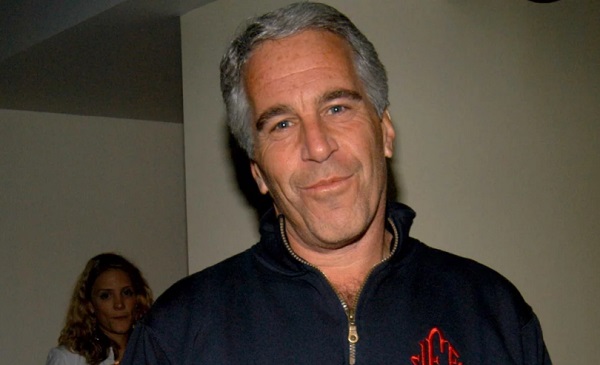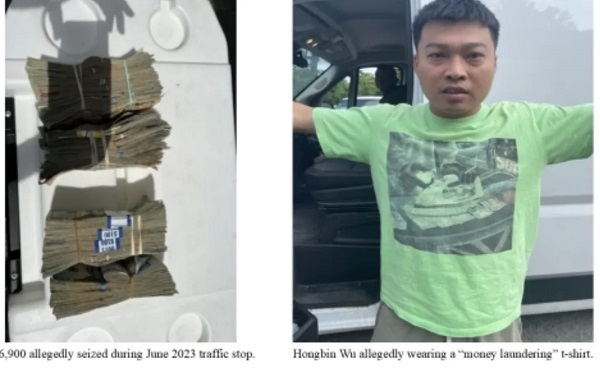Crime
Actor’s Death Raises Alarm about Off-Label Anesthetic

From Heartland Daily News
By ![]() Kevin Stone
Kevin Stone
A federal court has indicted and charged five individuals for contributing to the death of actor Matthew Perry by providing him with the anesthetic ketamine.
On October 28, 2023, Perry was found floating face-down in his hot tub. An autopsy later revealed his death had been caused by “acute effects of ketamine.” Perry, a star of the television show Friends, had long struggled with addiction.
Charged in the 18-count indictment are Perry’s personal assistant, Kenneth Iwamasa; two doctors, Salvador Plasencia and Mark Chavez; and two other individuals, Erik Fleming and Jasveen Sangha. Sangha was known as the “Ketamine Queen” who is accused of running a North Hollywood “stash house.”
Multiple Players Charged
Documents filed by prosecutors claim Perry’s assistant and an acquaintance worked with the two doctors and the drug dealer to provide tens of thousands of dollars worth of ketamine to fuel Perry’s addiction. Fleming coordinated the sale with Sangha, prosecutors say.
Iwamasa provided at least 27 ketamine injections to Perry in the five days leading up to his death, according to the prosecution. Chavez admitted selling ketamine to Plasencia for redistribution to Perry by falsifying information to a distributor and then using a prescription written in the name of a former patient.
When Plasencia texted another doctor about how much to charge Perry for the ketamine, he wrote, “I wonder how much this moron will pay,” and “Let’s find out,” prosecutors say. The trial date for Chavez and Plasencia is set for March 4, 2025.
Binge-Use Temptation
Ketamine is a dissociative anesthetic that can produce hallucinogenic effects. Ketamine is also used as a pain reliever and for the relief of treatment-resistant depression.
Some people use ketamine as a recreational drug for its ability to induce hallucinations. The effects of ketamine are short-lived, and users may rapidly develop tolerance to the drug, leading some to binge-use it.
Celebrity Power, Vulnerability
Ketamine is widely accepted as safe and effective for use as an anesthetic in a clinical setting. Off-label uses of the drug that may lead to abuse have led to rising concerns.
A recent New York Times article questioned the drug’s safety for off-label use in the wake of Perry’s death. Although ketamine ordinarily carries no more risk than other anesthetics, pain relievers, and antidepressants.
Celebrities can use their fame and wealth to circumvent effective safeguards against over-prescription and abuse, says Devon Herrick, a health economist.
“Physicians have significant leeway to prescribe FDA-approved medications off-label,” said Herrick. “Some off-label therapies later become mainstream, while others fall out of favor. What makes Matthew Perry’s situation unique was his celebrity status. Similar to the experience of Michael Jackson, Perry was able to enlist the help of physicians willing to provide him with a risky drug therapy not appropriately monitored.
“It’s unlikely a noncelebrity patient would be able to find a doctor willing to administer an anesthetic in their home,” said Herrick. “The lure of both money and bragging rights to say they’re a celebrity doctor likely culminated in Perry’s demise.”
Off-Label Benefits
Ketamine was developed as an anesthetic agent and was found to help treat some mental health conditions through off-label use, which is a common procedure, says Jeffrey Singer, a senior fellow at the Cato Institute who defends off-label use of the drug.
“Roughly 20 percent of all drugs prescribed in the U.S. are for off-label uses,” said Singer. “The [Food and Drug Administration, FDA] has always deferred to clinicians and clinical researchers on how to use drugs off-label. Once the FDA approves a drug for a particular indication, it permits clinicians to use it for any other indication where clinicians and clinical researchers believe the drug can be helpful.”
This real-world experience brings important knowledge, says Singer.
“As clinical research and clinical experience continue, such off-label drug use can lead to subsequent therapeutic advances,” said Singer. “However, clinical researchers often discover over time that specific off-label uses do not work. Over time, we should learn a lot more about what conditions ketamine works best for and what are the optimal ways to use it for those conditions.”
The system is working, says Singer.
“There is no reason why the FDA should add to the already cumbersome regulatory regime by requiring further approvals for off-label uses,” said Singer. “The FDA should leave the off-label uses of drugs to clinical researchers, clinicians, and the civil tort system.”
Black Market Problem
Adding new legal barriers to ketamine prescription would probably drive those wishing to abuse the drug into the black market, where its use would be wholly unmonitored and more dangerous drugs are also readily available, says Singer.
“People are already getting ketamine in the black market, along with other psychedelics such as MDMA, psilocybin, DMT, and magic mushrooms,” said Singer. “If the FDA further restricted online sales [of ketamine], it would only intensify profits in the black market and drive people to the black market, where the purity and strength of these drugs are less certain.
“We already have seen reports of black market MDMA—“ecstasy” or “Molly”—being laced with fentanyl,” said Singer. “Further restricting online sales of ketamine—or limiting its off-label use by licensed clinicians—will only make it more dangerous for people who continue to use ketamine. But it will not prevent them from using it.”
Kevin Stone ([email protected]) writes from Arlington, Texas.
Crime
‘We’re Going To Lose’: Steve Bannon Warns Withholding Epstein Files Would Doom GOP


From the Daily Caller News Foundation
By Jason Cohen
Former White House adviser Steve Bannon warned on Friday that Republicans would suffer major losses if President Donald Trump’s administration does not move to release documents related to deceased pedophile Jeffrey Epstein’s crimes and associations.
Axios reported on Sunday that a two-page memo showed the Department Of Justice (DOJ) and FBI found no evidence Epstein kept a “client list” or was murdered, but public doubts have continued. Bannon said on “Bannon’s War Room” that failure to release information would lead to the dissipation of one-tenth of the Make America Great Again (MAGA) movement and significant losses for the Republican Party in the 2026 midterms and the 2028 presidential election.
Dear Readers:
As a nonprofit, we are dependent on the generosity of our readers.
Please consider making a small donation of any amount here.
Thank you!
“It’s not about just a pedophile ring and all that, it’s about who governs us, right? And that’s why it’s not going to go away … For this to go away, you’re going to lose 10% of the MAGA movement,” Bannon said. “If we lose 10% of the MAGA movement right now, we’re going to lose 40 seats in ’26, we’re going to lose the [presidency]. They don’t even have to steal it, which they’re going to try to do in ’28, because they’re going to sit there and they go, ‘They’ve disheartened the hardest-core populist nationalists’ — that’s always been who governs us.”
Bannon also demanded the publication of all the Epstein documents on “Bannon’s War Room” Thursday. He called on the DOJ to go to court and push for the release of the documents or for Trump to appoint a special counsel to manage the publication.
Epstein was arrested in 2019 and charged with sex trafficking. Shortly after, he was found dead in his New York Metropolitan Correctional Center cell shortly after. Officials asserted that he hanged himself in his cell.
However, Epstein’s death has sparked years of theories because of the malfunctioning of prison cameras, along with guards admitting to falsifying documents about checking on the then-inmate. The DOJ inspector general later confirmed that multiple surveillance cameras outside of his cell were inoperable, while others captured the common area outside his door.
Both Bannon and Daily Caller News Foundation co-founder Tucker Carlson have speculated that Epstein had connections to intelligence agencies.
Former Labor Secretary Alex Acosta allegedly indicated that Epstein was tied to intelligence, according to Vicky Ward in The Daily Beast.
Crime
Sweeping Boston Indictment Points to Vast Chinese Narco-Smuggling and Illegal Alien Labor Plot via Mexican Border

 Sam Cooper
Sam Cooper
Case details a pipeline from China through Mexico, trapping trafficked illegal migrants as indentured workers in a sweeping drug network.
In a sweeping indictment that tears into an underworld of Chinese narco infiltration of North American cities — including the smuggling of impoverished Chinese nationals across the Mexican border to work as drug debt slaves in illegal drug houses — seven Chinese nationals living in Massachusetts stand accused of running a sprawling, multimillion-dollar marijuana trafficking and money laundering network across New England.
The backdrop of the human smuggling allegations stretches back to 2020, as an unprecedented wave of illegal Chinese migrants surged across the U.S. border with Mexico — a surge that peaked in 2024 under the Biden administration before the White House reversed course. This explosive migration trend became a flashpoint in heated U.S. election debates, fueling concerns over border security and transnational organized crime.
Six of the accused, including alleged ringleader Jianxiong Chen of Braintree, were arrested this week in coordinated FBI raids across Massachusetts. The border exploitation schemes match exactly with decades-long human smuggling and Chinese Triad criminal pipelines into America reported by The Bureau last summer, based on leaked intelligence documents filed by a Canadian immigration official in 1993. A seventh suspect in the new U.S. indictment, Yanrong Zhu, remains a fugitive and is believed to be moving between Greenfield, Massachusetts, and Brooklyn, New York.
The case paints a striking portrait of China-based criminal organizations operating behind the quiet facades of upscale American suburban properties. Prosecutors allege the defendants owned or partnered with a network of sophisticated indoor grow houses hidden inside single-family residences in Massachusetts, Maine, and beyond, producing kilogram-scale shipments of marijuana. According to court documents, the marijuana was sold in bulk to distributors across the Northeast, and the profits — amounting to millions — were funneled into luxury real estate, cars, jewelry, and further expansion of their illicit operations.
“During a search of [ringleader Chen’s] home in October 2024, over $270,000 in cash was allegedly recovered from the house and from a Porsche in the driveway,” the indictment alleges, “as well as several Chinese passports and other identification documents inside a safe.”
According to the indictment, Chen’s cell phone data confirmed his personal role in orchestrating smuggling logistics and controlling workers. Additional searches of homes where co-defendants lived yielded over 109 kilograms of marijuana, nearly $200,000 in cash, and luxury items including a $65,000 gold Rolex with the price tag still attached.
A photo from the indictment, humorously but damningly, shows alleged ring member Hongbin Wu, 35, wearing a green “money laundering” T-shirt printed with an image of a hot iron pressing U.S. dollar bills on an ironing board — a snapshot that encapsulates the brazenness of the alleged scheme.
Key to FBI allegations of stunning sophistication tying together Chinese narcos along the U.S. East Coast with bases in mainland China is a document allegedly shared among the conspirators.
“The grow house operators maintained contact with each other through a list of marijuana cultivators and distributors from or with ties to China in the region called the ‘East Coast Contact List,’” the indictment alleges.
Investigators say the conspiracy reveals a human smuggling component directly tied to China’s underground migration and debt bondage networks, mirroring exactly the historic intelligence from Canadian and U.S. Homeland Security documents reported by The Bureau last summer.
The alleged leader, 39-year-old Jianxiong Chen, is charged with paying to smuggle Chinese nationals across the Mexican border, then forcing them to work in grow houses while withholding their passports until they repaid enormous smuggling debts.
“Data extracted from Chen’s cell phone allegedly revealed that he helped smuggle Chinese nationals into the United States — putting the aliens to work at one of the grow houses he controlled,” U.S. filings say.
“This case pulls back the curtain on a sprawling criminal enterprise that exploited our immigration system and our communities for personal gain,” said U.S. Attorney Leah Foley. “These defendants allegedly turned quiet homes across the Northeast into hubs for a criminal enterprise — building a multi-million-dollar black-market operation off the backs of an illegal workforce and using our neighborhoods as cover.”
The arrests come amid a surge of Chinese migrants entering the U.S. through Mexico, part of a pattern previously exposed in Canadian diplomatic and intelligence reporting. In 1993, a confidential Canadian government study, “Passports of Convenience,” warned that Chinese government officials, in collusion with Triads and corrupt Latin American partners, were driving a multi-billion-dollar human smuggling business. That report predicted that tens of thousands of migrants from coastal Fujian province would flood North America, empowered by Beijing’s tacit support and organized crime’s global reach.
It also warned that mass migration from China in the 1990s came during a time of political upheaval, a trend that has apparently re-emerged while President Xi Jinping’s economic and political guidance has been increasingly questioned among mainland citizens, particularly since the Covid-19 pandemic crisis and lockdowns inside China.
The 1993 report, obtained and analyzed exclusively by The Bureau, described how the Triads — particularly those connected with Chinese Communist networks in Fujian — would leverage human smuggling to extend their influence into American cities. The migrants, often saddled with debts of $50,000 or more, became trapped in forced labor, prostitution, or drug networks, coerced to repay their passage fees.
“Alien smuggling is closely linked to narcotics smuggling; many of the persons smuggled in have to resort to prostitution or drug dealing to pay the smugglers,” the 1993 Canadian immigration report says.

Citing legal filings in one U.S. Homeland Security case, it says a Triad member who reportedly smuggled 150 Fujianese migrants into New York stated that if fees aren’t paid “the victims are often tortured until the money is paid.”
Supporting these early warnings, a 1995 U.S. Department of Justice report echoed the Canadian findings, stating that “up to 100,000 Chinese aliens are smuggled into the United States each year,” with 85 percent originating from Fujian. The DOJ report also cited allegations of “negotiations between the Sun Yee On Triad and the Mainland Chinese Government,” suggesting that smuggling and criminal infiltration were tolerated — if not orchestrated — to extend China’s economic and political influence abroad.
That report added American investigators and immigration officials concluded it was nearly impossible to counter waves of illegal immigration from China with deportation orders, and the government should focus on “the larger menace working its way into U.S. cities: Chinese transnational criminal organizations.”
“To combat the growing threat of Asian organized crime in the West,” it says, “law enforcement officials must tackle this new global problem through an understanding of the Triad system and the nature of its threat to Western countries.”
In New England, the Braintree indictment shows how those old predictions have not only materialized but scaled up.
These networks operate by embedding Chinese nationals into illicit industries in North America, from black-market cannabis cultivation to high-end money laundering. Once inside, they channel profits back through complex underground banking channels that tie the North American drug economy to China’s export-driven cash flows and, ultimately, to powerful actors in Beijing.
In recent years, Maine has emerged as a strategic hotspot for illicit Chinese-controlled marijuana operations. As The Bureau has reported, the state’s vast rural areas, lax local oversight, and proximity to East Coast urban markets have made it a favored location for covert grow houses.
-

 Bruce Dowbiggin2 days ago
Bruce Dowbiggin2 days agoThe Covid 19 Disaster: When Do We Get The Apologies?
-

 Crime1 day ago
Crime1 day agoSweeping Boston Indictment Points to Vast Chinese Narco-Smuggling and Illegal Alien Labor Plot via Mexican Border
-

 Alberta2 days ago
Alberta2 days agoAlberta school boards required to meet new standards for school library materials with regard to sexual content
-

 Environment1 day ago
Environment1 day agoEPA releases report on chemtrails, climate manipulation
-

 Business16 hours ago
Business16 hours agoTrump slaps Brazil with tariffs over social media censorship
-

 International16 hours ago
International16 hours agoSupport for the Ukraine war continues because no one elected is actually in charge.
-

 Addictions18 hours ago
Addictions18 hours agoCan addiction be predicted—and prevented?
-

 Business19 hours ago
Business19 hours agoCBC six-figure salaries soar




